 Here’s the challenge: In 5-minutes or less, describe the US education system. Oh, OK. Go ahead and take 10…20….50 minutes…… Now, find someone - anyone - in the United States who agrees with/ validates/ substantiates everything you’ve said. My hypothesis - based on recent discussion about the US education system with educators from around the United States and from 5 other countries - is that both of these tasks would be incredibly challenging, potentially frustrating, and, ultimately, illuminating. Learning about the Colombian education system along side educators from New York, Florida, North Carolina, Colorado, Tennessee, Virginia, and Minnesota provided a new framework in how to think about the system in my own country. A seemingly simple question would be posed to us teachers and result in 9 diverse responses. “What does assessment look like in your schools?” “What standards do you need to teach?” “How many students are in your classrooms?” “How are public schools funded?” And we nine teachers — being proponents and champions and rebels and change-makers — were often passionate about telling our story about our schools and classrooms and local systems and politics and policy. This is the way American education can look. These are ways in which our system is working and these are ways in which our system is broken. This is the potential, because, we so ardently believe that there is such potential in our system for students. Otherwise, why would we be teaching? The United States is a place of diversity. Many subscribe, or at least acknowledge, the myth of the American Dream. Work hard, and you can succeed. You’re in control of your own destiny. Individualism is valued. Competition is rewarded. Local control and decentralization is paramount. We Americans do not like to be told what to do!* I believe its impossible to identify a quintessential American quality, observation, or pronouncement that describes the American way of life for all of us. I’ve found that the same is true for our education system. We don’t have one system; we have a multitude - states, counties, cities, districts, public, private, public charter, private charter, homeschool, un-school, online, duel enrollment, hybrid…. I’ve learned so much about education across the United States from my experiences in Colombia. Through conversation, inquiry, putting aside assumptions, and listening with the purpose of understanding, I’m developing a broader, richer picture of who we are as American teachers. Collaboration among teachers often happens at the school level and in other local capacities. National collaboration is a vital piece to understanding a broader landscape and how and where we fit into the narrative. International collaboration among teachers — well, it’s the gold standard for fostering mutual respect, understanding, and, not a small thing, for better understanding who we are. *Generalizations do not apply to all individuals.
1 Comment
I’m writing this post from the passenger seat. Brian’s navigating through afternoon traffic in Colorado Springs, CO. Not too far back, we caught pounding rain — the rains have been go to the Southwest this summer. Sarah’s in the back seat, wedged between the door and the camping gear that did not fit in the ‘trunk’ of our Prius C. For the most part today, I’ve been looking out the window. I’ve recognized time and time again that I love watching the world through a window… riding the train between Beijing and Datong, bus ride after bus ride during my year with Up With People, watching the clouds from 35,000 feet, car rides when I was a kid, car rides as an adult…..I’ll take a window seat to an aisle seat any day. Experiencing Colombia through windows was so visually stimulating and invigorating. On our way across Bogotá, at 5:30am and in a van, you see a city awakening. It is not only the rising sun that signals the advent of the day, it is the bustle on the street and sidewalks filled with students of all ages making their way to school. Traffic looms large in this city of 8 million, the queues for the Transmilenio spill off of the platforms. Motorcyclists weave in and out and so close to my window that I can see hair on the knuckles of the left hand pulling the clutch. Dogs are ever-present and are abundant as we head into the neighborhoods. They are calm and integrated; people seamlessly step around the dogs sleeping in the middle of sidewalks. Through the windows I pondered the abundance of graffiti — not entirely attractive, although some pieces are exceptionally beautiful - what is the cultural norm? Leaving the city, heading to Zipaquirá, I note the universality of toll both transactions, behold a Santa Theresa parade - cars, vans, motos, buses decorated with paper flowers and statues of Santa Theresa strapped to grills; the caravan heading to the Salt Mine cathedral for mass. Acres and acres of green houses where fresh flowers sold in Bogotá are grown in abundance, with great care and order. Cartagena is so different from Bogotá - vibrant with color and heat. Zipping along in taxis it was easy to default to prayer - I don’t want to die in a cab in Cartagena! - watching the path a driver would create where there, to my eyes, was no path to be taken. My intuition said brake while driver’s instinct said accelerate. We were saved by Pedro who generously and safely transported us to and from our hotel and the school, allowing for opportunity to converse and to inquisitively look out the window without clutching onto the seat. In Bocagrande we could see the Atlantic Ocean between building as we we made our way toward the Centro and out of the Walled City. The Clock Tower was a comforting site, providing a home base to understanding where I was. Tourists lined up at the dock for day trips out to islands just west of the Convention Center. At 8a street vendors are setting up their wares in no great hurry - their days would be long into the evening. Beyond the Walled City, the city buzz brinked on city clamor. Daily, we pasted an outdoor market, down the street from a mall and across from a little water way where large, brown pelicans would scavenge. From the car, the market was one dimensional — I could see the fruits and vegetables, tables of fresh fish, animal carcasses hanging from posts. Luckily, Allie, our Peace Corps friend, invited us to take the public bus out to Rosalia’s and Pedro’s home for Sunday lunch. I sat at the window which opened from my waist to near the ceiling. Discreetly holding my camera, I could capture the streets teaming with vehicles and the occasional donkey-pulled cart. The market we had passed many times before was now a new experience — I could smell it and hear it. I could have reached out and touched a hairy knuckle, the traffic is so cozy. I like being here. And I like being there. And I really do like the journey in between in a way that the cream filling really makes that Oreo Cookie truly worthwhile. We left Colombia on Saturday morning, just 5 days ago. How does it feel like my time in Colombia was so long ago?
I've been back to my own school for the past three days, mostly working to get my room cleaned and organized and ready for the kiddos. Tomorrow we have our first faculty meeting/ professional development day of this new school year. The topic? PLAY. In a letter from our school Directorship, tomorrow we're tasked with this: " Let’s spend one day experiencing, exploring, and discussing how PLAY manifests in our nervous systems to help us create social relationships and emotional regulation." We'll be learning about the idea promoted by Jaak Panksepp, current neuroscientist, who "believes that PLAY is one of 7 biological motivational systems in the brain that promotes self-regulation, and that it is one of the brain’s major sources of joy." Now, I really didn't need a neuroscientist to give validity to our play in Colombia, but I appreciate the segue between school life and real life, between work and play, about living fully and nurturing relationships and how we got to play in Cartagena! In Cartagena, our days were full with joy, inquiry, intense reflection and intense connections. There were school visits and taxi rides, coordination and collaboration with my fellow American teachers, hotel showers, and lessons and presentation preparations. And their was The Heat. I came to understand that there were five of experiencing Cartagena together -- Jen, John, Sherri, Michael, and The Heat. And not just heat; heat + humidity. While billions of people live in similar climates, I do not, and The Heat was a companion I have not known so intimately in my life. Yes, we met when we lived in Charleston, South Carolina, and when Sarah and I were in southern China in July 2011. But The Heat seemed to be in a cranky, hot-mess kind of mood in Cartagena (and, I can honestly say, I do not love Cartagena any less because of it.) I think that if it were not for a few times in which we played, I would not have been so mentally and emotionally and even physically resilient. Our play in the waters of the Caribbean Sea gave me the chance to laugh. To let go of the stress of the day. I was able to connect anew with my friends. Splashing in the waves, bopping in the water, being overtaken by a wave, closing our mouths before swallowing a big-ole- gulp of salty water, snorkeling - It was a salve for my soul, leaving me feeling buoyant and deliciously human. Thank you, Sherri, John, and Michael for playing in Cartagena. On our first day in Bogotá we visited the US Embassy for a security briefing. Oh, we heard about every which way we might be kidnapped or robbed and how to avoid such activities in Colombia. Such precautions for Americans are based on the US Department of State's travel warning for Colombia which includes.... U.S. government officials in Colombia regularly travel to the major cities of Colombia without incident. However, U.S. government officials and their families in Colombia normally are only permitted to travel to major cities by air. They may not use inter- or intra-city bus transportation, or travel by road outside urban areas at night. U.S. government officials and their families in Colombia must file a request to travel to any area in Colombia outside of two general areas. The first area is outlined by the cities of Bogota, Anolaima, Cogua, and Sesquile. The second area is on the Highway 90 corridor that connects Cartagena, Barranquilla, and Santa Marta. All U.S. citizens in Colombia are urged to follow these precautions and exercise extra caution outside of the aforementioned areas. Thus, our travel has been limited based on these precautions. Coupled with the need to secure host teachers who are TEA Alumni (teachers who spent 6 weeks in the United States learning about American schools and culture through the US Department of State program), and you now know why we were in Bogotá and Cartagena. Our group of 9 teachers spent the first 6 days in Bogotá learning about the country, the education system, visiting schools, and engaging in cultural experiences. On July 21, 4 of us teachers traveled to Cartagena for our host school stay of 8 days while 5 women in our group remained in Bogotá for their host experience. On July 29, we all met up in Cartagena for collaboration, a dynamic and extraordinary meeting with 19 TEA alumni from around Colombia, our debrief, and some time in the city. Both Bogotá and Cartagena are enchanting cities. We have had the privilege of taking in the beauty of each city and, through our visits to schools and communities, we had the privilege of seeing how disparity between the rich and the poor looks by way of transportation, sanitation, employment, housing, and education. While I do not want to sanitize the picture I've had of Cartagena and Bogotá, I would like to share charms of each city, through my eyes. Bogotá Cartagena  It's been a few days since we left our host school, Bertha Gedeón de Baladi, after saying our goodbyes. Getting to know this amazing school - even just a bit - has been intensely profound. There is something about Bertha that is special. There is a feeling of learning, hope, love with the students at the heart of every endeavor. Would you like a tour of Bertha? Because I'd very much like to show you around..... Bertha Gedeón de Baladi is a school in the Campestre neighborhood in Cartagena. From 6am - noon, approximately 1,200 1st - 5th graders go to school and the 800 or so 6th - 11th graders attend from 1pm - 7pm. While double sessions are typical across Colombia, the facilities at Bertha are small. Bertha focuses on three values: Gratitude, Science and Progress. And the one-woman-force that is Rosalia Mendoza is bringing English to the secondary students of Bertha to further support students' progress and engagement in the world. As our host teacher, Rosalia planned each activity to be an opportunity for her students. From English to cultural interaction Rosalia built a bridge between her students and English and the world through our visit. Our first visit Please press play on the slideshow....captions included. Take a peek Over a few days we had the chance to observe classes and to take a peek here and there. Our last day There's a mixed emotion feeling of celebration/ mourning. Being with the children again on Tuesday morning was wonderful; saying goodbye isn't always easy. First, we were greeted by the school marching band and a little parade. We spent the rest of the morning presenting to the students. My colleagues shared about their hometowns. I had done so last week, so, instead, I prepared a slideshow of pictures I had taken with and of the Bertha students. It was fun to watch it with them. A couple of students did presentations for us, too, including a rap and a performed poem. Finally, students presented us each with a poster as a gift for our students back home. You'll understand why I love this poster so very much. One last celebratory photo..... And then it was time to say goodbye...... I learned so much from these students, from the teachers, from Alli and from Rosalia, in particular. I watched teachers doing remarkable teaching with limited resources. Bertha is alive with passionate educators, determined students, and with hope.
Thank you, Bertha Gedeón de Baladí, for the inspiration, the love, and the assurance that the world is, indeed, a beautiful place. |
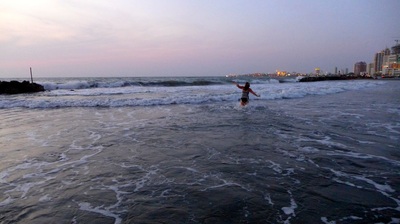

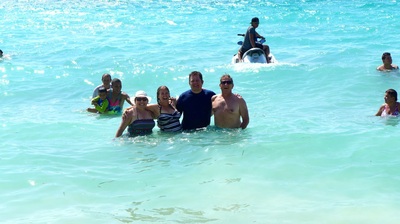
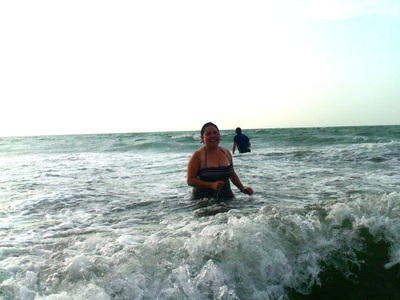


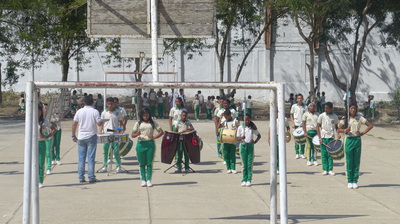



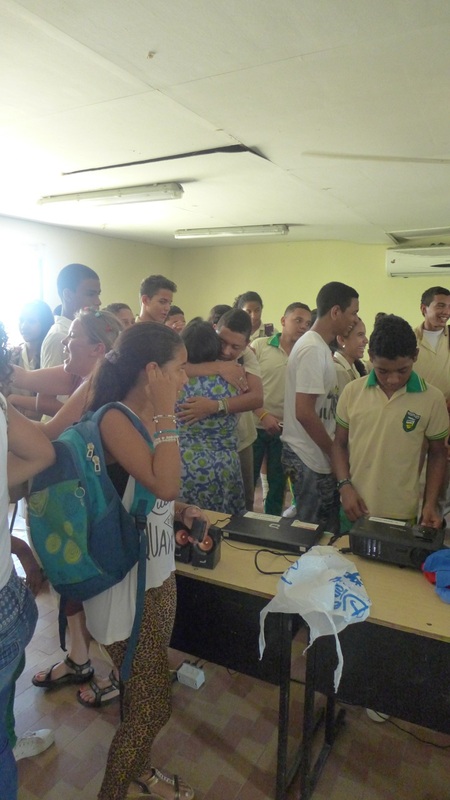
 RSS Feed
RSS Feed